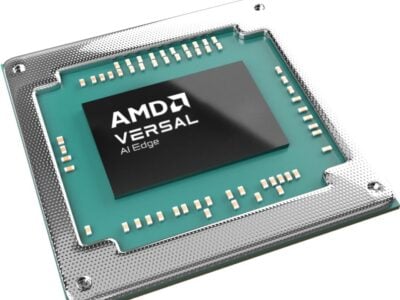Silicon Europe: a cluster of clusters to boost the European micro- and nanoelectronics industry
The cluster partners from Germany, Belgium, France and the Netherlands are linked by a common goal: they aim to secure and expand Europe’s position as the world’s leading center for energy efficient micro- and nanoelectronics and information and communications technology (ICT). Together, the clusters represent about 800 research institutes and companies, which account for more than 150,000 jobs; among the companies are global market leaders such as Philips, NXP, Globalfoundries, Infineon, STMicroelectronics, Schneider Electric and Thales.
The move comes from the aknowledgment that in order to remain competitive and assert its position in a global market place, Europe has to leverage its expertise across all its labs and workforce.
„We need to give more visibility to the fields of micro- and nanoelectronics at the European level, not only to attract businesses globally, but also as an incentive for the European states to get their act together for new investments in research and education“ explained Jean Chabbal, Chief Representative and Minalogic’s CEO. According to Chabbal, in these highly innovative sectors, Europe lacks the type of visibility that Korea, Taiwan, or the Silicon Valley have been able to maintain for many years. It is not so much for the lack expertise, Europe has plenty, he says, but rather a lack of coordination among the different research entities.
![]()
In 2007 only 10% of all worldwide investments into microelectronics, around 28 billion Euro, went to Europe, while about 48% went to Asia. Since 2000 Europe’s market share in the semiconductor industry has dropped from 21 to 16 percent, yet the European microelectronics sector still employs 135,000 people directly along with another 105,000 in its supplier industries.
The idea behind this international cluster of cluster is to analyze the strengths and weaknesses of the different microelectronics research labs and industries across Europe in order to establish a clear map of competences. This could help identify regions for ‘smart specialization’, a EU’s control mechanism to tailor and efficiently distribute development funds in the European technology regions.
Acting on a pan-European scale, Silicon Europe could also give all its partners the means to leverage and better share European funds for the acquisition of advanced research equipment or semiconductor pilote lines. These installations could then be shared across different labs and research projects.
By increasing the visibility of microelectronics, this transnational cluster alliance aims at gathering active political support from the different European member states, so that national governments increase their cooperation and synchronize their economic and innovation policies. Silicon Europe is also calling for a European micro- and nanoelectronics summit, which – similar to the German IT summit – would bring together leading actors and decision makers from the European Commission, the national governments and all relevant branch organizations and associations. Members of this super cluster are also working on a strategic technology roadmap, which could serve for the European Commission as a template and development guide for future programs. The European Commission’s initial fund for the first 3 years of this project amounts to 2.8 millions euros.
More information at www.silicon-europe.eu
Visit the cluster partners
Silicon Saxony at www.silicon-saxony.de
Minalogic at www.minalogic.com
Point-One at www.point-one.nl
DSP Valley at www.dspvalley.com
 If you enjoyed this article, you will like the following ones: don't miss them by subscribing to :
eeNews on Google News
If you enjoyed this article, you will like the following ones: don't miss them by subscribing to :
eeNews on Google News



